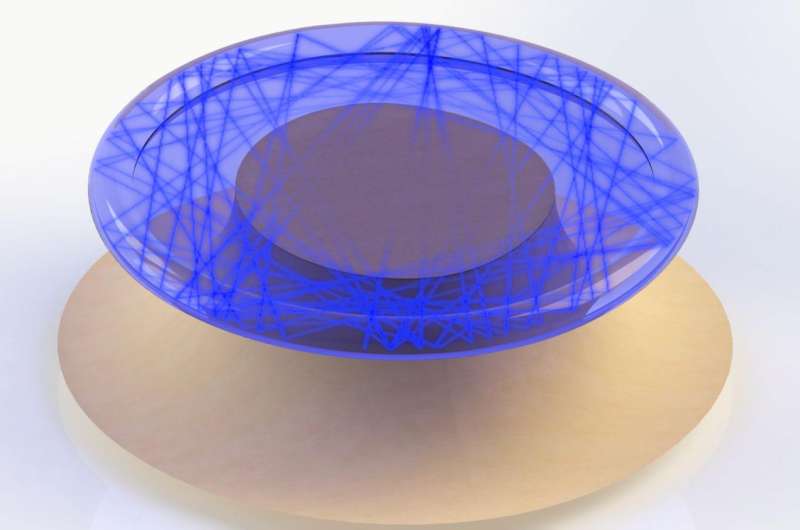Testing Weyl's law at optical frequencies

Stable states (or resonances) are always of importance in understanding reactions and collision processes of all energy scales, but they often prove difficult to detect in experiments, particularly when a system exhibits chaos. A team led by Professor Yun-Feng Xiao of Peking University has recently conducted the first study of the statistics of chaotic resonances in an optical microcavity. The work has appeared as a Rapid Communication in the April issue of Physical Review E.
Chaos is usually identified as a classical phenomenon, typical of a complex, macroscopic world. However, chaos may appear even in such a small device as a silicon-made microcavity of deformed circular shape. Among the long-standing predictions that characterize the analogy between the micro- and the macroscopic worlds (in physics jargon, quantum-to-classical correspondence), Weyl's law occupies a prominent place, and, surprisingly, it is still awaiting full experimental validation. With its contribution, Prof. Xiao's group, in a collaborative effort with Domenico Lippolis of Tsinghua University and Jiangsu University, has taken a significant step toward a definitive test of this theory at optical frequencies.
Weyl's law predicts the number of resonances within a certain energy or frequency range. The experimental task consists of measuring the statistics of the resonances from a far-field spectrum and comparing it to the theoretical expectation. "Easier said than done, to say the least," Dr. Lippolis remarks, pointing out the numerous difficulties involved in singling out resonances as broadened peaks in a spectrum due to the overlapping of several modes, and the heavy energy losses of the cavity.
In order to overcome this hurdle, Prof. Xiao's team takes advantage of the well-known quantum effect of tunneling, which connects the chaotic field with the so-called whispering gallery modes (WGM). The key point is that the WGMs are easily recognizable from the spectrum as very sharp peaks, and they can be counted accurately, which indirectly draws reliable information on the desired statistics of the chaotic resonances.
Silica cavities of a few microns thick and 100-micron wide were fabricated through optical lithography by Li Wang, a graduate student in Prof. Xiao's group, who also performed the experiments. A microcavity sits on the top of a silicon pillar of tunable radius and acts as a light absorber. Etching the pillar before every measurement modifies the spectrum of the resonances excited by visible or infrared light, allowing for a thorough statistical analysis.
The main result emerging from the measurements is experimental evidence of chaotic light-matter interactions that take place within a short enough time for waves to behave like classical rays (the so-called Ehrenfest time of quantum-to-classical correspondence). According to Prof. Xiao, "The indirect and yet clear experimental detection of a signature of chaos, obtained by exclusively counting non-chaotic resonances, is remarkable and very encouraging for a full validation of Weyl's law at optical frequencies. Additionally, our approach may provide a general tool for the analysis of chaotic resonances in open systems, and thus it may soon become of inspiration to a wide community of physicists."
More information: Li Wang et al. Statistics of chaotic resonances in an optical microcavity, Physical Review E (2016). DOI: 10.1103/PhysRevE.93.040201
Journal information: Physical Review E
Provided by Peking University





















